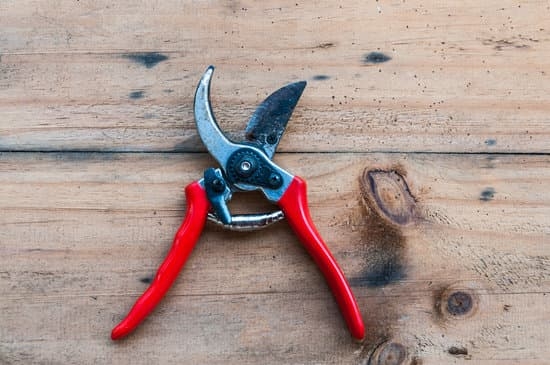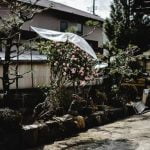Rock gardening ideas have gained popularity among avid gardeners and landscape enthusiasts looking to add a unique touch to their outdoor space. Rock gardens offer a low-maintenance alternative to traditional gardens, making them ideal for busy individuals or those with limited gardening experience. In this article, we will explore the beauty of rock gardening and provide helpful tips and inspiration for creating your own stunning rock garden.
Rock gardens are not only visually appealing but also offer a range of benefits. They can thrive in challenging environments such as rocky terrain or dry climates where other plants may struggle to grow. By incorporating rocks of different sizes and shapes, you can create texture and depth in your garden design. Additionally, rock gardens require less water and maintenance compared to traditional gardens, making them an eco-friendly landscaping option.
When embarking on your rock gardening journey, it’s crucial to choose the right rocks that complement your overall vision. Consider the color, size, and texture of the rocks as well as how they will blend with the surrounding landscape.
In the following sections, we will discuss essential tools and supplies needed for rock gardening, planning and designing tips for your layout, as well as the best plants to thrive in rock gardens such as succulents, alpine plants, and wildflowers. Let’s dive into the world of rock gardening and unleash our creativity in transforming outdoor spaces into captivating rock garden sanctuaries.
Choosing the Right Rocks for Your Rock Garden
When it comes to creating a beautiful rock garden, choosing the right rocks is essential. The type of rocks you select will not only impact the aesthetic appeal of your garden but also its overall durability and longevity. One popular option is to use locally sourced rocks that are readily available in your area.
These rocks will not only blend seamlessly with the natural landscape but also be more cost-effective than purchasing imported stones. Additionally, local rocks will already be weathered, making them more resistant to erosion and ensuring they complement the surrounding environment.
Another consideration when choosing rocks for your rock garden is their size and shape. Opt for a variety of sizes to create visual interest and texture within your garden. Larger rocks can serve as focal points or borders, while smaller stones can be used to fill in gaps or create pathways.
In terms of shape, look for rocks with interesting formations or unique textures that will add character to your garden. Remember that different types of rocks, such as lava rock, limestone, or granite, can each bring a distinct look and feel to your rock garden.
One key factor to keep in mind when selecting rocks for your rock garden is their porosity. Porous rocks, like sandstone or limestone, can absorb water and provide a beneficial habitat for plants by retaining moisture in the soil. On the other hand, non-porous rocks like granite are more resistant to weathering and erosion but may not provide as conducive an environment for plant growth.
Consider the climate in your region and the specific needs of the plants you plan to include in your rock garden when choosing between porous and non-porous rocks. By carefully selecting the right rocks for your rock garden, you can set the foundation for a stunning and sustainable outdoor space that will thrive for years to come.
Essential Tools and Supplies for Rock Gardening
Rock gardening is a wonderful way to add beauty and interest to your outdoor space. To create a successful rock garden, you will need the right tools and supplies to bring your vision to life. From preparing the soil to planting your favorite succulents, having the essential tools on hand will make the process smoother and more enjoyable.
Soil Preparation Tools
Before you start building your rock garden, it’s important to prepare the soil properly. You’ll need tools such as a shovel, rake, and trowel for digging up the soil, loosening it, and removing any debris. A soil testing kit can also be helpful in assessing the quality of your soil and determining if any amendments are needed.
Rocks and Stones
Of course, no rock garden is complete without rocks. When choosing rocks for your garden, consider their size, shape, and color. You’ll need a wheelbarrow or cart to transport the rocks to your desired location. A sturdy pair of gloves will also come in handy when moving heavy rocks around.
Planting Supplies
Once your rock garden layout is planned out, you’ll need planting supplies such as potting soil, mulch, and fertilizer. A small hand pruner or shears can help trim plants as needed. Consider using decorative pebbles or gravel to fill in gaps between rocks and add visual interest to your garden.
By having these essential tools and supplies on hand, you’ll be well-equipped to create a stunning rock garden that reflects your style and personality. Whether you’re a beginner or seasoned gardener, rock gardening can be a rewarding hobby that allows you to unleash your creativity in outdoor spaces.
Planning and Designing Your Rock Garden Layout
When planning and designing your rock garden layout, it is important to consider various factors such as the size of your space, the amount of sunlight it receives, and the overall aesthetic you want to achieve. A well-thought-out design will not only enhance the beauty of your garden but also ensure that it is functional and easy to maintain.
Considering the Topography
One of the first steps in planning your rock garden layout is to take a close look at the topography of your space. Consider any slopes, elevations, or natural features that can be incorporated into your design. By working with the existing landscape, you can create a more harmonious and visually appealing rock garden.
Creating Focal Points
Focal points are essential elements in any garden design, including rock gardens. These can be large rocks, unique plant specimens, or even decorative features like sculptures or water elements. By creating focal points in strategic locations within your rock garden layout, you can draw attention and create visual interest.
Choosing Plant Combinations
When planning your rock garden layout, think about the types of plants you want to include and how they will complement each other. Mix different varieties of succulents, alpine plants, and wildflowers to create a diverse and dynamic garden. Consider factors like color, texture, and blooming times to ensure year-round interest in your rock garden.
By carefully considering the topography of your space, creating focal points, and choosing plant combinations that work well together, you can design a beautiful and functional rock garden that reflects your personal style and enhances your outdoor space. Take inspiration from various rock gardening ideas to create a unique and stunning landscape that you can enjoy for years to come.
Best Plants for Rock Gardens
Rock gardens are a beautiful and creative way to add texture, color, and dimension to your outdoor space. Choosing the right plants is essential to creating a successful rock garden that thrives in its unique environment. When it comes to selecting the best plants for rock gardens, consider incorporating a variety of succulents, alpine plants, and wildflowers for a stunning display.
Succulents are popular choices for rock gardens due to their ability to thrive in dry, rocky conditions. Their fleshy leaves and stems store water, making them low-maintenance and drought-tolerant plants. Some popular succulents that work well in rock gardens include sedum, sempervivum (also known as hens-and-chicks), aeonium, and echeveria. These plants come in a wide range of colors, shapes, and sizes, allowing you to create interesting combinations and patterns within your rock garden.
Alpine plants are another excellent option for rock gardens as they are adapted to grow in mountainous regions with harsh conditions. These plants typically prefer well-draining soil and plenty of sunlight, making them ideal for rocky landscapes. Some common alpine plants for rock gardens include saxifrage, dianthus, campanula, and armeria. These compact perennials produce vibrant flowers that add a pop of color to your rock garden while requiring minimal maintenance.
Incorporating wildflowers into your rock garden can add a touch of natural beauty and attract pollinators to your outdoor space. Wildflowers like yarrow, blanket flower (gaillardia), lupine, and blue flax thrive in rocky soils with good drainage.
These colorful blooms not only enhance the visual appeal of your rock garden but also contribute to the overall biodiversity of your garden ecosystem. With the right combination of succulents, alpine plants, and wildflowers, you can create a dynamic and visually striking rock garden that transforms your outdoor space into a serene oasis.
Creative Rock Garden Ideas for Small Spaces
Rock gardening can be a wonderful way to enhance the beauty of your outdoor space, even if you have limited room to work with. Creative rock garden ideas for small spaces can help you transform a tiny corner of your yard or balcony into a stunning oasis of natural beauty.
One key aspect of creating a rock garden in a small space is maximizing every inch of available area, utilizing vertical space where possible, and choosing the right rocks and plants to complement the size of the area.
When it comes to rock gardening in small spaces, consider using smaller rocks or pebbles to create intricate patterns or textures that make the most out of the limited square footage available. Incorporating different sizes and shapes of rocks can add visual interest and depth to your mini rock garden. Another creative idea for small spaces is to create a tiered rock garden, with rocks arranged at varying heights to maximize planting opportunities while adding dimension to the design.
Incorporating elements like miniature water features, such as a small fountain or bubbling rock, can also be an innovative way to add ambiance and tranquility to your compact rock garden. These features not only provide visual interest but also contribute soothing sounds that can create a peaceful atmosphere in your outdoor space. Additionally, incorporating different textures through ground covers or succulents can further enhance the aesthetics of your small rock garden while requiring minimal maintenance.
| Rocks | Plants |
|---|---|
| Smaller rocks or pebbles for intricate patterns | Ground covers for different textures |
| Tiered arrangement for added dimension | Succulents for low maintenance |
| Vertical space utilization with varied shapes and sizes | Alpine plants for rocky environments |
Maintaining Your Rock Garden
Rock gardening is a fantastic way to add a unique and low-maintenance feature to your outdoor space. However, just like any other garden, rock gardens require proper maintenance to thrive.
When it comes to watering your rock garden, it is essential to strike a balance between providing enough moisture for the plants without overwatering them. Since rocks tend to retain heat and dry out quickly, it’s crucial to monitor soil moisture levels regularly and adjust your watering schedule accordingly.
In addition to watering, weeding is another important aspect of maintaining a rock garden. Weeds can quickly take over a rock garden if left unchecked, so regular weeding is necessary to keep your plants healthy and thriving. It’s recommended to pull weeds by hand to avoid damaging nearby plants or disturbing the rocks in the garden. Applying a layer of mulch around your rock garden can also help suppress weed growth and retain moisture in the soil.
When it comes to fertilizing your rock garden, less is often more. Most rock garden plants are adapted to nutrient-poor conditions, so they don’t require heavy fertilization. A slow-release fertilizer applied in spring or early summer can help provide the necessary nutrients for plant growth without overstimulating excessive growth. Additionally, incorporating organic matter into the soil when planting can help improve soil fertility over time without the need for frequent fertilization.
| Maintaining Your Rock Garden Tips | Watering | Weeding | Fertilizing |
|---|---|---|---|
| Tip 1: | Monitor soil moisture levels regularly. | Pull weeds by hand regularly. | Apply slow-release fertilizer in spring or early summer. |
| Tip 2: | Avoid overwatering by adjusting watering schedule based on conditions. | Use mulch to suppress weed growth. | Incorporate organic matter into the soil for long-term fertility. |
Rock Garden DIY Projects
Building rock walls, paths, and features in your rock garden can elevate its beauty and add a unique touch to your outdoor space. Whether you are aiming for a more structured look or a naturalistic feel, incorporating these elements can enhance the overall design of your rock garden. Here are some DIY projects to consider:
- Rock Walls: Building rock walls in your garden can help create boundaries, add dimension, and prevent erosion. When constructing a rock wall, start by collecting rocks of varying sizes and shapes. Dig a trench for the foundation, fill it with gravel for drainage, then stack the rocks on top using mortar to secure them in place.
- Rock Paths: Incorporating winding rock paths throughout your garden not only provides visual interest but also improves accessibility. To create a durable and visually appealing path, lay down a base of gravel or sand, arrange flat rocks or stepping stones in a desired pattern, then fill the gaps with smaller stones or gravel for stability.
- Rock Features: Adding unique rock features like boulders, sculptures, or waterfalls can make your rock garden truly stand out. Consider creating a focal point using an interestingly shaped rock as a centerpiece or installing a small water feature surrounded by rocks for added tranquility.
These DIY projects allow you to customize your rock garden according to your preferences and style. Whether you prefer a more structured layout with defined paths and walls or a more naturalistic look with strategically placed features, there are endless possibilities to explore when it comes to building rock walls, paths, and features in your garden.
By incorporating these elements into your rock garden design, you can create a visually stunning outdoor space that reflects your personality and love for nature. Experimenting with different textures, colors, and shapes of rocks can add depth and visual interest to your garden while providing opportunities for creativity and self-expression. So roll up your sleeves, gather some rocks, and start transforming your outdoor oasis into a beautiful rock paradise.
Inspiration Gallery
Creating a stunning rock garden is not just about choosing the right rocks and plants; it’s also about creativity and inspiration. Rock gardening ideas can come in many forms, from traditional to modern, minimalist to lush. Each unique style offers a different approach to incorporating rocks into your garden design, allowing you to express your personality and taste through your outdoor space.
Every season brings its own charm and beauty to a rock garden, with plants blooming and rocks gleaming under the changing sunlight. Whether you prefer a vibrant springtime display with colorful wildflowers or a serene winter scene with evergreen succulents, there are endless possibilities for creating a rock garden that thrives in every season.
By carefully selecting plants that complement each other and choosing rocks that enhance their natural beauty, you can enjoy a dynamic and visually captivating garden all year round.
In conclusion, rock gardening is not just a hobby; it’s an art form that allows you to bring nature’s beauty into your own backyard. By incorporating the right rocks, plants, and design elements, you can create a unique and stunning oasis that reflects your personal style and creativity.
With careful planning, maintenance, and ongoing inspiration from various sources like books and online resources, you can continually evolve your rock garden to keep it fresh and exciting for years to come. So go ahead, unleash your inner artist, and let these rock gardening ideas inspire you to create the perfect rock garden for every season.
Frequently Asked Questions
What Is the Best Base for a Rock Garden?
The best base for a rock garden is well-drained soil that is low in fertility. Opt for sandy or gravelly soil to ensure proper drainage, which is crucial for the health of the plants in a rock garden.
How Do You Layout a Rock Garden?
When laying out a rock garden, consider the natural flow of the landscape and mimic it with your design. Start by placing larger rocks first, then fill in gaps with smaller rocks and plants. Aim for a balanced look with different heights and textures.
What Is the Best Plant for a Rock Garden?
The best plants for a rock garden are those that can thrive in dry, sunny conditions with good drainage. Succulents like sedum and sempervivum are excellent choices, as well as drought-resistant perennials like lavender, yarrow, and ornamental grasses. Choose plants that complement the size and style of your rocks for a cohesive look.

Welcome to my gardening blog! I am passionate about plants and enjoy sharing my knowledge and experiences with others. In this blog, I will write about everything related to gardening, from tips on how to get started to updates on my own garden projects.





